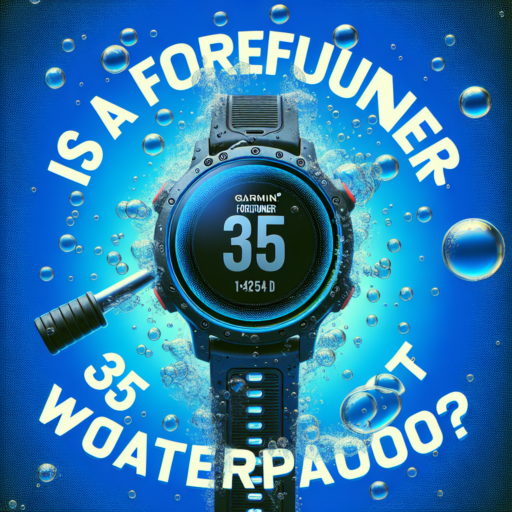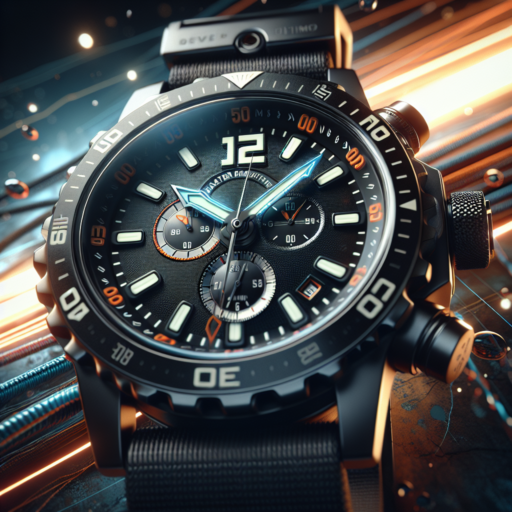Can You Swim with an Apple Watch Series 3? Unveiling the Truth
Many Apple Watch Series 3 owners ponder upon the question, can you swim with an Apple Watch Series 3? It’s vital to understand the water resistance capabilities of your wearable tech to ensure its longevity and functionality. The Apple Watch Series 3 is designed with a water resistance rating of 50 meters under ISO standard 22810:2010. This rating primarily signifies that the device can withstand activities in shallow water, such as swimming in a pool or the ocean. However, it’s crucial to interpret what this rating means for regular swimmers and occasional water enthusiasts.
When considering taking your Apple Watch Series 3 for a swim, it’s essential to comprehend the limitations set by Apple. The company advises against wearing the watch during activities involving high-velocity water or submersion below shallow depths. This includes water sports such as water skiing, wakeboarding, or scuba diving. The force of water striking the watch at high speed can compromise its water resistance seal, leading to potential damage. Thus, while swimming laps or leisurely paddling around is generally safe, exposing the Apple Watch Series 3 to more extreme conditions could be risky.
It is also worth noting the care and maintenance required post-swimming with an Apple Watch Series 3. Apple recommends rinsing the watch with fresh water if it comes into contact with anything other than fresh water, such as salt or chlorinated water, to prevent potential corrosion or damage to the seals. Ensuring the water lock feature is enabled before diving in can also prevent accidental screen activations. Regular care and mindful usage can help maintain the integrity of the watch’s water resistance capability and extend its lifespan for enjoyable swimming experiences.
Understanding Water Resistance: A Deep Dive into Apple Watch Series 3 Specifications
The Apple Watch Series 3 debuted with a splash, making waves with its enhanced features and capabilities. Among its standout specifications is the water resistance rating, which is a critical factor for users who lead active lifestyles or simply seek peace of mind in their daily interactions with water. Understanding the nuances of this feature can illuminate why the Series 3 is a robust choice for those prioritizing durability in their wearable technology.
What Does Water Resistance Mean?
At its core, the water resistance rating of the Apple Watch Series 3 denotes its ability to withstand water to a certain degree without incurring damage. Specifically, it is rated as water-resistant to 50 meters. However, it’s essential to note that this does not equate to waterproof. Apple advises against submerging the Watch Series 3 for long periods or engaging in high-velocity water activities, which can compromise its integrity over time.
Everyday Applications and Limitations
The water resistance of the Apple Watch Series 3 empowers users to engage freely in a range of activities without undue worry. From washing hands to taking a shower or even swimming in a pool, the Series 3 stands as a reliable companion. Nonetheless, it’s advised to avoid exposing it to soap or soapy water, high-pressure water jets, saunas, or steam rooms. Understanding these limitations ensures that users can maximize the lifespan of their device while partaking in the activities they love.
How to Prepare Your Apple Watch Series 3 for Swimming: Tips and Tricks
Preparing your Apple Watch Series 3 for swimming involves several straightforward yet crucial steps to ensure its longevity and functionality. The Apple Watch Series 3 is known for its ability to track various types of workouts, including swimming. However, to make the most of its capabilities and protect it from potential water damage, follow these essential tips and tricks.
Making Sure Your Watch is Swim-Proof
First and foremost, confirm that your Apple Watch Series 3 is labeled as swim-proof. This model is designed to withstand activities in shallow water, such as swimming in a pool or ocean. Before taking the plunge, it’s important to check for any physical damage that could compromise its water resistance. Make sure that the screen or the case doesn’t have any cracks and that all seals are intact.
Activating Water Lock Mode
Before diving in, activate the Water Lock mode to prevent the water from interacting with the touch screen and to avoid accidental inputs. You can enable this feature by swiping up on the watch face to access the Control Center and then tapping the water droplet icon. When you finish your swim, turn the Digital Crown to unlock the screen and to eject any water that’s trapped inside the speaker.
Note: While the Apple Watch Series 3 is designed to be water-resistant, it’s not completely waterproof. It is suitable for activities like swimming in a pool or the ocean, but it should not be used for scuba diving, waterskiing, or other activities involving high-velocity water or submersion below shallow depths.
Maximizing Your Swim with Apple Watch Series 3: Features and Functions
The Apple Watch Series 3 comes equipped with an array of features specifically designed to enhance your swimming experience. Not only does it offer waterproof resistance, making it your perfect aquatic companion, but it also includes functions tailored for both casual swimmers and professional athletes. Understanding these capabilities can significantly optimize your swim sessions.
Water Lock Function
One of the standout features for swimmers is the Water Lock mode. This function is particularly useful as it prevents the screen from activating underwater due to water pressure, allowing for a more focused swim. Activating this mode is straightforward and ensures that your swim data remains accurate and uninterrupted by accidental screen touches.
Accurate Swim Tracking
The Apple Watch Series 3 excels in providing detailed metrics about your swimming sessions. It meticulously records the number of laps, the distance covered, and the type of strokes, offering insightful analysis of your performance over time. This data is crucial for swimmers looking to improve their technique and endurance. By leveraging this information, users can make informed decisions on how to tweak their training regimes for maximum efficiency and results.
Maintaining Your Apple Watch Series 3 Post-Swim: A Comprehensive Guide
Maintaining your Apple Watch Series 3 after a swim session is crucial to preserve its functionality and longevity. As a device tailored for active users, it encounters different elements, including water. Despite its water-resistant feature, proper care is required to ensure its continued performance. This guide provides essential tips on how to maintain your Apple Watch Series 3 post-swim.
Cleaning Your Apple Watch Series 3
After swimming, it’s important to clean your Apple Watch to remove any chlorine, salt, or bacteria that could potentially harm its casing or straps. Start by gently rinsing your watch under lukewarm, fresh water. Avoid using soaps or other cleaning products as they can degrade the water-resistant seals and coatings. Once rinsed, dry your Apple Watch Series 3 with a non-abrasive, lint-free cloth to prevent water spots and corrosion.
Checking and Removing Water from your Apple Watch
Even though the Apple Watch Series 3 is designed to expel water from its speaker ports, manually checking and removing water can enhance its performance. You can use the Water Lock feature by swiping up on the watch face to access the Control Center and tapping the water droplet icon. After your swim, turn the Digital Crown to unlock the screen and eject water. This feature is not only vital for maintaining sound quality but also helps in preserving the internal components of your Apple Watch Series 3.
No se han encontrado productos.
Comparing Water Capabilities: Apple Watch Series 3 vs. Other Series
When evaluating the water capabilities of Apple Watches, it becomes essential to understand the advancements Apple has made through its series. The Apple Watch Series 3 marked a significant step forward, offering users the ability to swim with their devices without worry. But how does it stand up to the later models in terms of this specific feature?
Water Resistance Rating
The Apple Watch Series 3 was designed with a water resistance rating of 50 meters under ISO standard 22810:2010. This rating means that it can be used for shallow-water activities such as swimming in a pool or ocean. However, when comparing it to the Apple Watch Series 4 and beyond, we notice that the later models maintain this standard but introduce new technology and coatings to enhance durability against water exposure, potentially offering a more robust defense against water damage over time.
Innovations in Water Ejection
One of the standout features introduced with the Series 2 and continued in the Series 3 is the water ejection system, which uses sound vibrations to expel water from the speaker’s cavity. Later series models have refined this technology, ensuring a more efficient way of clearing out water. This innovation is particularly noteworthy when comparing models for swimmers or those frequently exposed to water activities, emphasizing the Series 3’s capabilities while highlighting the continuous improvements in subsequent versions.
In summary, while the Apple Watch Series 3 offers robust water resistance appropriate for everyday use and recreational swimming, the exploration into the technological enhancements and additional features of later series reveals a commitment by Apple to not just maintain but elevate the user experience with each new release. This exploration into water capabilities serves as a crucial consideration point for users who prioritize this aspect when choosing their Apple Watch.
Real-Life Experiences: Swimming with an Apple Watch Series 3
Swimming with an Apple Watch Series 3 has become a topic of interest for many tech-savvy swimmers and fitness enthusiasts. The Series 3, known for its enhanced water resistance, has been tested by numerous users in diverse aquatic environments. This exploration into its capabilities brings to light the practicality and durability of wearing the Apple Watch Series 3 during swimming sessions.
One of the key aspects appreciated by users is the watch’s Water Lock feature, designed to prevent water from interfering with the touch screen. Activating this feature before diving in allows swimmers to focus on their activity without worrying about accidental screen touches. Furthermore, the ease of viewing swim metrics in real time, such as laps, distance, and heart rate, directly on the watch’s display, has been a game-changer for swimmers aiming to track their performance meticulously.
However, it’s important to acknowledge the limitations and maintenance required to keep the Apple Watch Series 3 in perfect condition after exposure to chlorinated or salt water. Users have shared that rinsing the watch under fresh water and drying it thoroughly can significantly extend its lifespan and maintain sensor accuracy. This practice ensures that the watch continues to function as expected, providing reliable data and performance tracking over time.
Common Concerns: Addressing Water Damage and Warranty for Apple Watch Series 3
When it comes to the Apple Watch Series 3, two of the most prevalent concerns among users are water damage and the specifics of its warranty coverage. It is widely recognized that the Apple Watch Series 3 boasts a significant degree of water resistance, designed to cater to swimmers and individuals leading an active lifestyle. However, it’s paramount to understand the distinctions between water resistance and waterproof capabilities to ensure the longevity of your device.
Water damage, while less likely due to the Series 3’s design, still poses a potential risk, especially in scenarios beyond typical use, such as deep-water activities or exposure to high-velocity water. The warranty coverage provided by Apple, as comprehensive as it is, has its limitations regarding water damage. It’s crucial for owners to familiarize themselves with these limitations, as understanding the specifics can drastically reduce the risks of encountering unwelcome surprises down the line.
Regarding warranty, Apple provides a standard one-year limited warranty that covers manufacturing defects but not accidental damage or water damage incurred outside of the specified resistance capabilities. This is where the distinction between normal use and misuse becomes particularly noteworthy. For users seeking additional protection, Apple’s AppleCare+ service extends the warranty and includes coverage for up to two incidents of accidental damage, albeit with certain fees attached.
Frequently Asked Questions: Swimming with an Apple Watch Series 3
Swimming with an Apple Watch Series 3 has become a popular concern among fitness enthusiasts and swimmers alike. The device is known for its versatility and water resistance, making it an ideal companion for a variety of aquatic activities. However, users often have a plethora of questions regarding the functionality and care of their Apple Watch Series 3 when it comes to swimming. We have compiled some of the most frequently asked questions to provide clarity and enhance your swimming experience with your Apple Watch.
Is the Apple Watch Series 3 Waterproof?
The term «waterproof» can often be misleading when it comes to electronic devices. The Apple Watch Series 3 is water-resistant up to 50 meters under ISO standard 22810:2010. This means it is designed to withstand activities in shallow water, such as swimming in a pool or ocean. However, it should not be used for scuba diving, waterskiing, or other activities involving high-velocity water or submersion below shallow depth.
How Can I Track My Swim Workouts with My Apple Watch Series 3?
Tracking swim workouts with the Apple Watch Series 3 is both straightforward and beneficial for monitoring your progress. Before you dive in, ensure that Water Lock is enabled to prevent your watch from registering unintended inputs in the water. Post-swim, the watch automatically expels any water from its speaker using sound vibrations. To begin tracking, simply open the Workout app, select «Pool Swim» or «Open Water Swim,» and set your pool length if you’re in a pool to get accurate lap counts and average lap times.
How Do I Maintain My Apple Watch Series 3 After Swimming?
Proper maintenance of your Apple Watch Series 3 after swimming is crucial for preserving its functionality and lifespan. Always rinse your Apple Watch under warm, fresh water and wipe it with a lint-free cloth to remove chlorine or salt. The Digital Crown may collect debris or sand; gently rotating and pressing the crown while holding the watch under warm tap water can help dislodge any particles. Remember, while the Apple Watch Series 3 is designed to be water-resistant, it’s important to minimize exposure to soaps, shampoos, conditioners, lotions, and perfumes, which can negatively impact water seals and acoustic membranes.
Final Verdict: Is the Apple Watch Series 3 Your Ultimate Swim Companion?
When diving into the quest for the perfect swim companion, the Apple Watch Series 3 emerges as a strong contender. With its sleek design and water-resistance up to 50 meters, it promises to be a robust ally for both casual swimmers and aquatic athletes alike. However, assessing its capabilities further unveils whether it truly lives up to the expectations of being your ultimate swim partner.
The watch’s built-in swim tracking features stand out, offering insights into your swim sessions. Metrics such as laps, distance covered, and calories burned are readily available at your wrist, courtesy of the Apple Watch’s comprehensive fitness tracking capabilities. This data not only encourages improvement but also tailors a swimming regimen that fits your personal fitness goals. Yet, it’s essential to take into account that while these features are impressive, the user experience may vary based on individual expectations and the specific requirements of their swimming routine.
Durability and performance under water are crucial factors for swimmers. The Apple Watch Series 3’s resistance to water and its ability to track swimming activities make it a potent candidate for your swim arsenal. Nonetheless, the device’s age and the rapidly evolving technology landscape invite potential users to ponder if newer models might offer enhanced features that could significantly improve their swimming experience.



